Shorter days and cold weather sound like they should be bad news for trail runners. But winter running can actually be your best friend, and as part of the Run 1000 Miles Challenge, we’re sharing the science to prove it.
It may be hard to get yourself motivated for a run when the darker evenings draw in and the weather gets colder, but with the colder temperatures can also come PB runs and better splits. Trail running expert Nick Hallissey takes a deep dive into the factors at play here, and how the body reacts to running in colder conditions.
Winter and your body

When the weather’s warm, your body has a lot more work to do in order to regulate its temperature while running. In a sense, the air is working against you. Not so now as the mercury drops. Fair enough, cold air can be challenging. But let’s have a look at how it affects some of your key systems.
Blood flow
We’ll start with blood flow. Look at many advice websites and you’ll read a prevailing wisdom that cold air makes your heart beat faster, because your blood vessels contract as the body seeks to warm itself, and your heart has to work harder to push the blood through those narrowing channels so it can get to where it’s needed. That sounds like a problem. But runners can bear two things in mind here.
Firstly, running is a cardiovascular activity: we’re already raising our heart rate, which means we are pretty good at opening up those narrowing blood vessels. And with a good warm-up, we can even get them open and prepped for the cold before we start running.
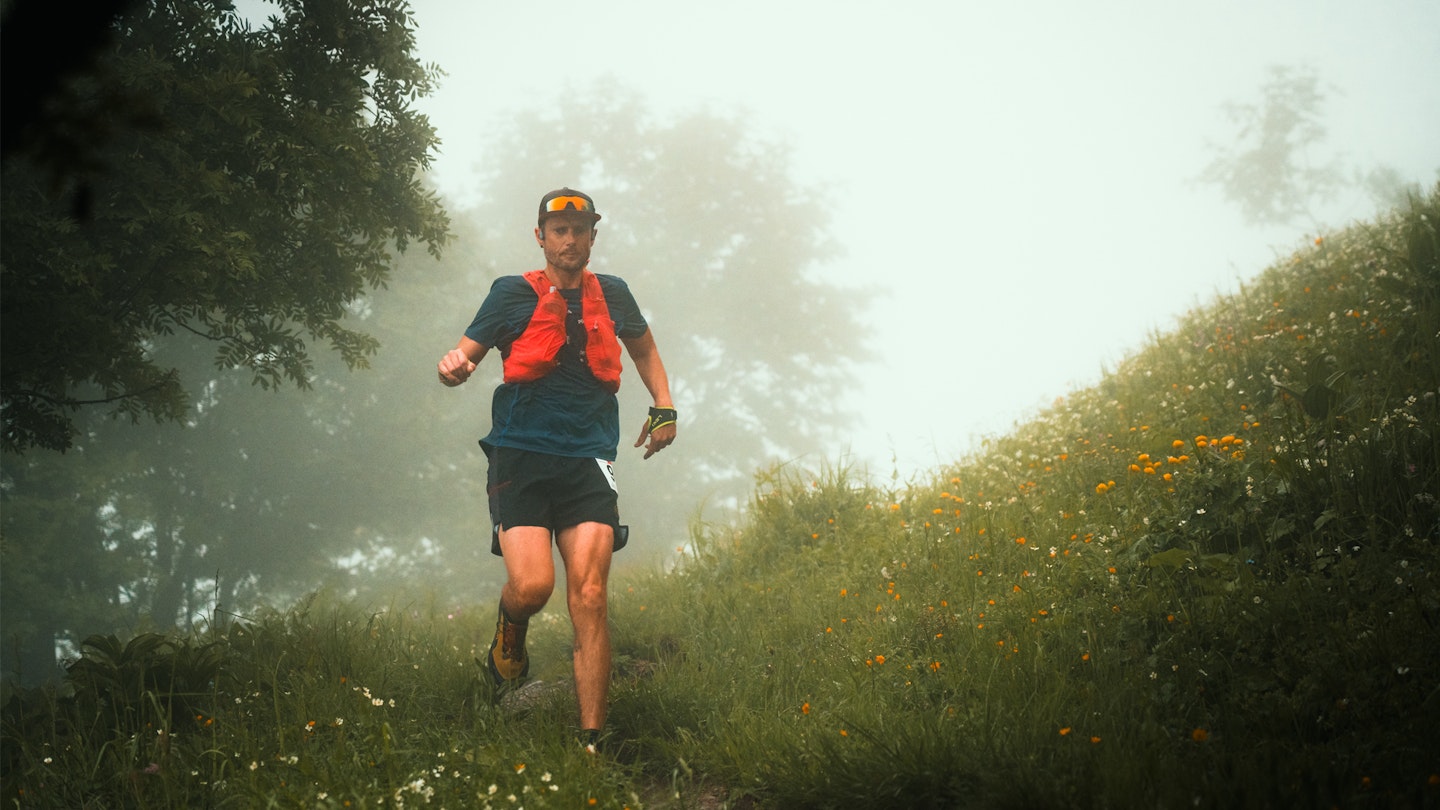
Secondly, the heart has to work just as hard – if not harder – in summer. Here to explain more is John Brewer, Professor of Applied Sports Science at Buckinghamshire New University:
“Winter running has distinct physiological advantages over summer running,” he explains. “Our bodies experience less strain as a result of having to deal with hot and possibly humid conditions and as a result, running simply feels easier.”
Brewer explains that this is because “one of the main challenges faced by runners is to control the increase in body temperature that occurs as a result of energy production.
“In winter, it’s easier to do this since the external temperature is cooler, so the body loses heat into the air more easily, and is less reliant on sweating to maintain temperature. Consequently, there is less likelihood of dehydration, and less need for the heart to beat faster and divert warm blood to the skin.”
Muscles
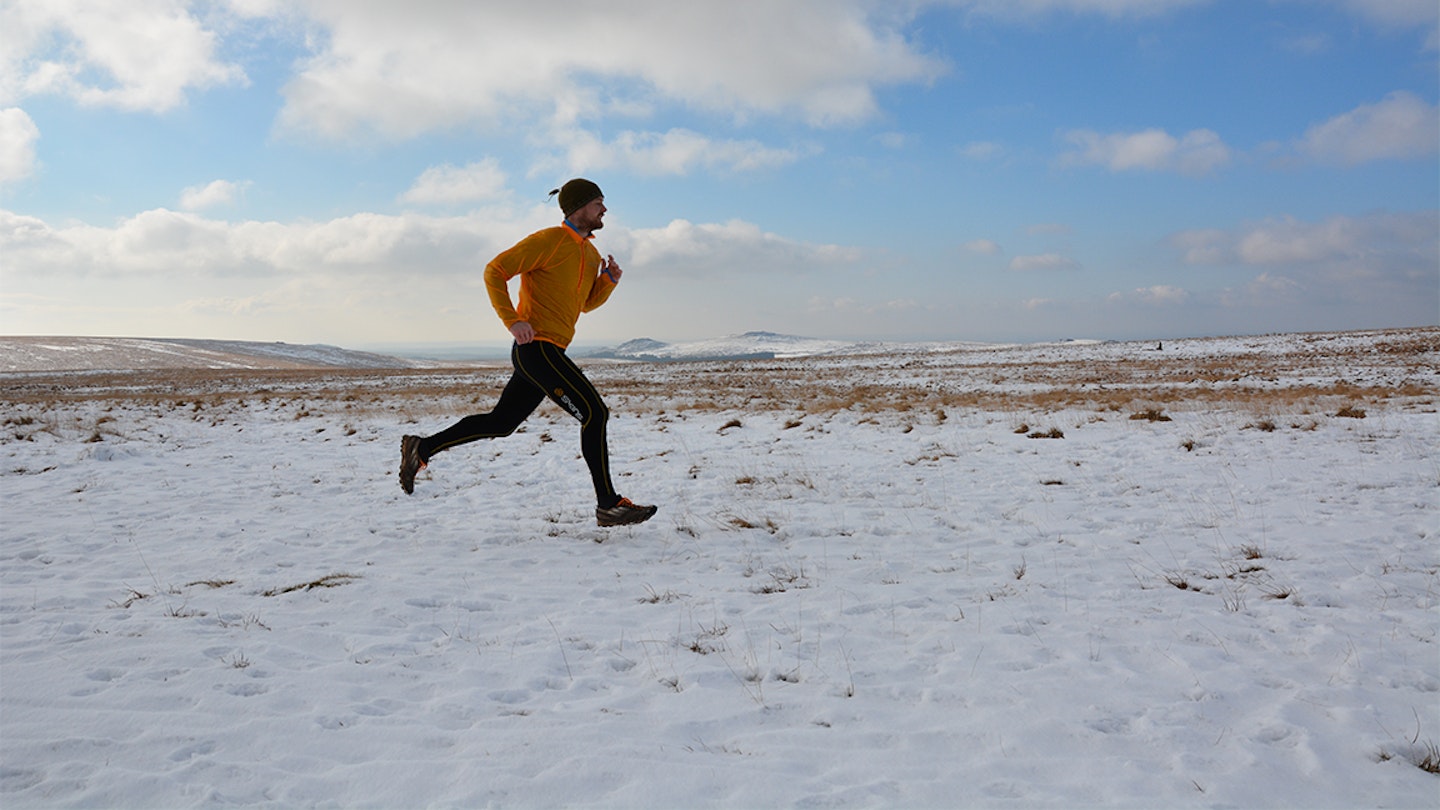
Next stop, muscles. Cold air can cause your muscles to lose heat and contract, causing tightness throughout the body. Joints get tighter and muscles can lose their range of motion. But there again, runners have a distinct advantage: we know how to warm up our muscles before we start running.
The simple act of stretching the quads, calves, arms, shoulders, and torso helps the muscles stock up on heat, ready for the start of the run – at which point they will, in short order, be supplied with all the heat they need. Don't forget, wearing the right trail running gear for the weather, especially winter trail running shoes, will help your body and muscles cope with the more extreme conditions.
Lungs
The lungs are an interesting case. If you’ve ever felt a sort of ‘cold burning’ sensation in your chest while running in winter, you may have assumed it was your lungs taking a pounding from the cold air. Not so, says Dr Steven T Devor, Director of Performance Physiology for Massachusetts Institute of Technology.
“The air that you are breathing in, while very cold in the atmosphere, is not cold at all by the time it reaches your lungs,” he insists.
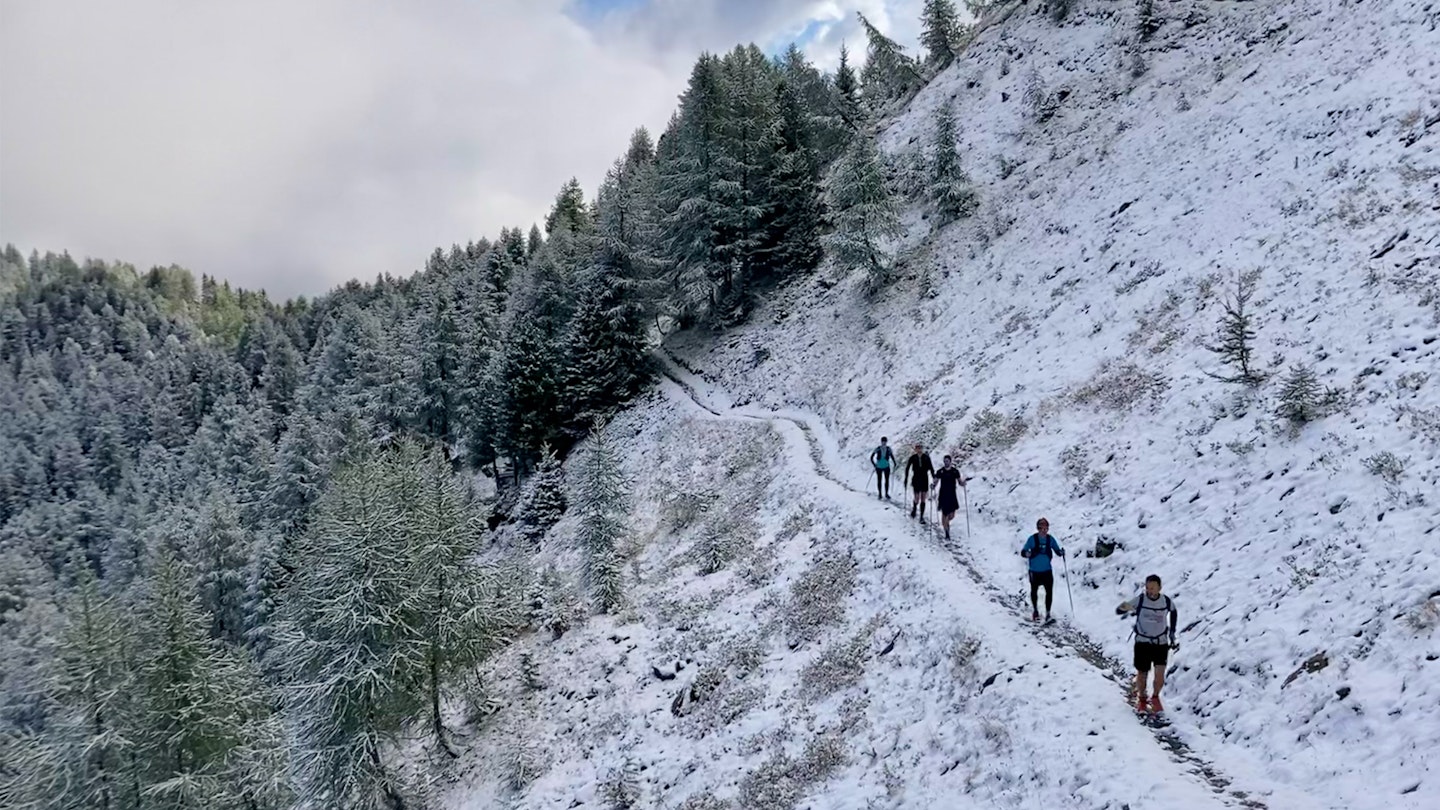
“By the time the air reaches the bottom of your trachea (windpipe), it’s warmed to body temperature and is 100% humidified. The burning sensation you experience is caused by the dehydration and subsequent irritation of the cells that line the trachea.
“The relative humidity of cold air tends to be very low, so the cells in your trachea give up their water supply to humidify the air entering your lungs. This is one reason why it’s still really important to drink water on a winter run: you are resupplying those hard-working cells with the valuable hydration they’ve sacrificed.
“And try to pant less”, adds Devor. “Short, quick breaths irritate a dried-out trachea more than longer, calmer ones.”
One specific caveat: winter may pose more risks if you’re asthmatic, points out fellrunner and former Olympian, Sarah Rowell: “If the air is damp and chilly, it has the potential to impact asthmatics more, so make sure you use your inhaler as recommended.”
The extremities

As the furthest areas away from the heart, these areas – the fingers, toes, scalp, pelvic extremities – are usually the last areas to get nice, warm blood sent to them. Therefore, they’re often the first areas to feel the cold.
As Rowell explains: “You will most likely have a degree of vasoconstriction, ie, the blood pools centrally in the body to assist with warmth, which is why feet and hands often get cold. Running gloves and a hat or ruff will help keep the feeling of warmth.”
There are some proven ways to improve your circulation and thus increase the speed of blood flow to these needy zones: exercise (Pilates and yoga can be especially helpful), regular fluid intake, massage, and (pay attention, office staff) not sitting still for too long.
But even the fastest, healthiest runners struggle with their extremities in winter. Take champion trail racer and skyrunner Ricky Lightfoot.
“My fingers are always the first things to feel the cold,” he complains. “These days I usually carry extra gloves in a dry bag and a Zippo hand warmer when it’s really cold. It’s a small metal case the size of the palm of your hand filled with lighter fuel. Light the burner, stick it in its pouch and it sorts them right out.”
Winter and your brain
Winter can give your brain some trouble. We’re talking, essentially, about motivation. The combination of shorter days and harsher conditions can be demoralising, especially if we’re prone to psychological issues such as winter blues, Seasonal Affective Disorder (SAD) or a lack of self-confidence in trickier conditions.
So how do we fight that? Good news again: as a runner, you’re already hard-wired to do just that. Mental health charity Mind says that exercising – even just making the decision to go outside and exercise – is key to tackling those issues. NHS advice recommends varying your exercise routine or developing a new interest, which in running terms could be a new discipline or distance: something that refreshes your perspective.
But if you’re still struggling to find motivation, the answer lies in adjusting your expectations and emphasising the things that are great about winter running. Here are a few things you can tell your brain.
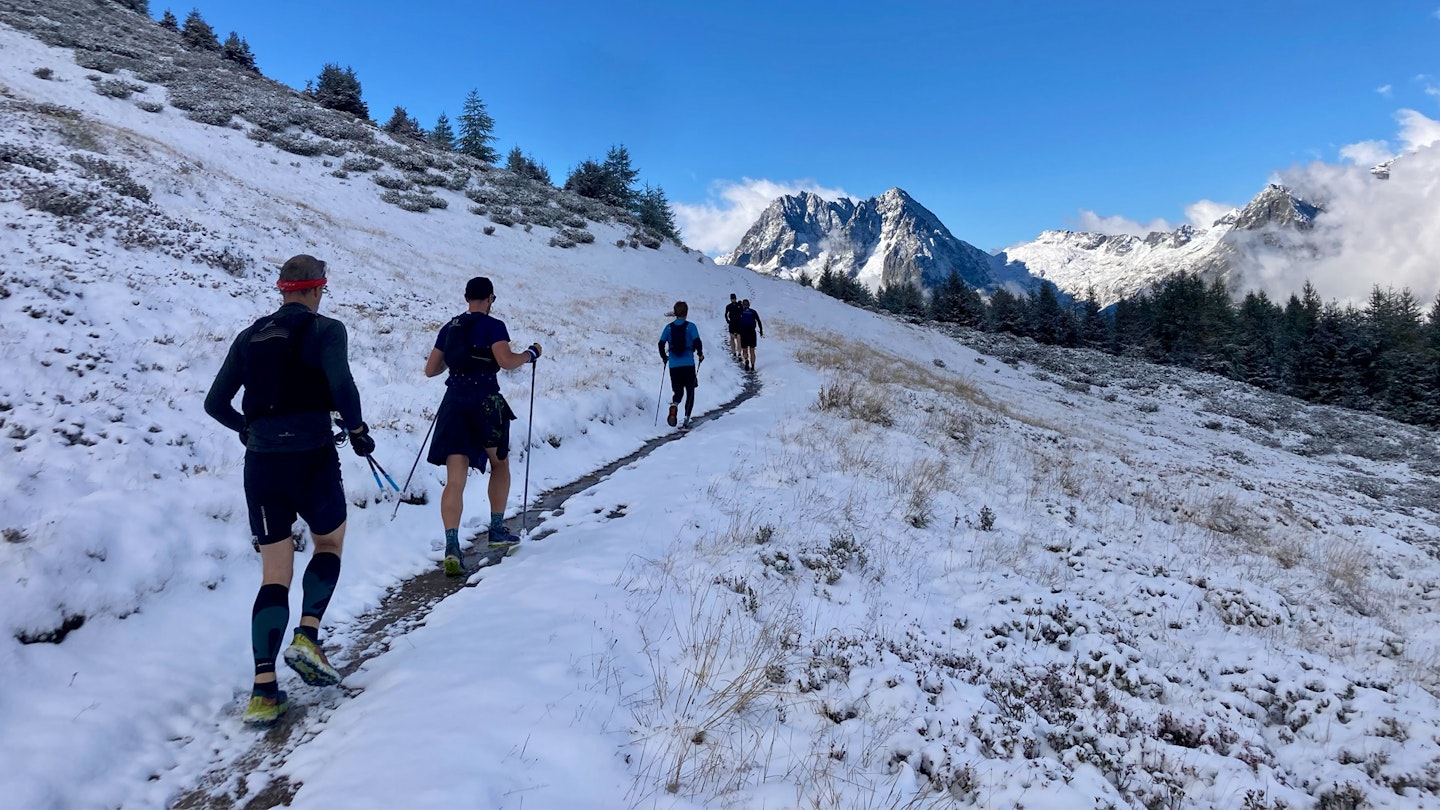
I’ll see more. Bare trees mean bigger views, especially in hill country. You’ll encounter winter migrant birds overhead or on lakes or coastlines (waxwings, oystercatchers, and brent geese look and sound amazing). And with less ground foliage, you’re more likely to spot incredible rock formations or archaeological remains as you pass.
I’ll maximise my daylight. If you don’t fancy running through dark mornings and evenings, you can really boost your lunchtimes. Order an Ordnance Survey Select map centred on your workplace and find the green lines (rights of way) – the hidden trails on your doorstep. Or track down popular local routes via apps like Strava, mapmyrun or Garmin Connect.
If post-run hygiene is a concern (ie, your workplace doesn’t have showers), just make it a brisk walk; it’s all good physical and mental groundwork for bigger exertions at the weekend. You could even turn the school run into a literal run: a gentle jog while your kid rides the bike; that’s great for both of you.
I’ll light up the night. Dark mornings and evenings aren’t a problem if you’ve a good running headtorch. By night, landscapes that you know by daylight look very different, and incredibly vivid. It’s great for meeting nocturnal animals, too: barn owls have a strange but wonderful liking for flying beside runners. Try a re-chargeable running headtorch that’s got a good strong beam and can keep you safe on the trails.
I’ll take a friend. Chances are there’s someone you know who feels down when the winter hits. Give them a call and suggest a run/gentle jog. Many wonderful friendships started this way.
I’ll meet new people. A local running group can help give you motivation and confidence, especially if you have concerns about running alone at night. They’re also great for advice, banter and simple companionship. (And check out #Run1000Miles – the world’s friendliest and most supportive running group, with 7.5k runners of all interests and abilities ready to share their experiences and celebrate yours.)
Maybe I’ll get a dog. Without doubt, the simplest way to ensure you have a reason to run through the winter. And maybe you could train for a canicross event in the spring...
For some runners, it’s about mind games too. Over to you, Ricky Lightfoot. “It’s never easy motivating yourself to get up early when the wind is hammering on the window and daylight won’t be seen for another two hours, but I always tell myself the guy who beat me last week will be out training and if I want to beat him next time, I’ve got to get out, too. So there’s an element of tricking the mind, but at the end of the day if you want something badly enough, you’ll just get out there and do it.”
Winter and the trail
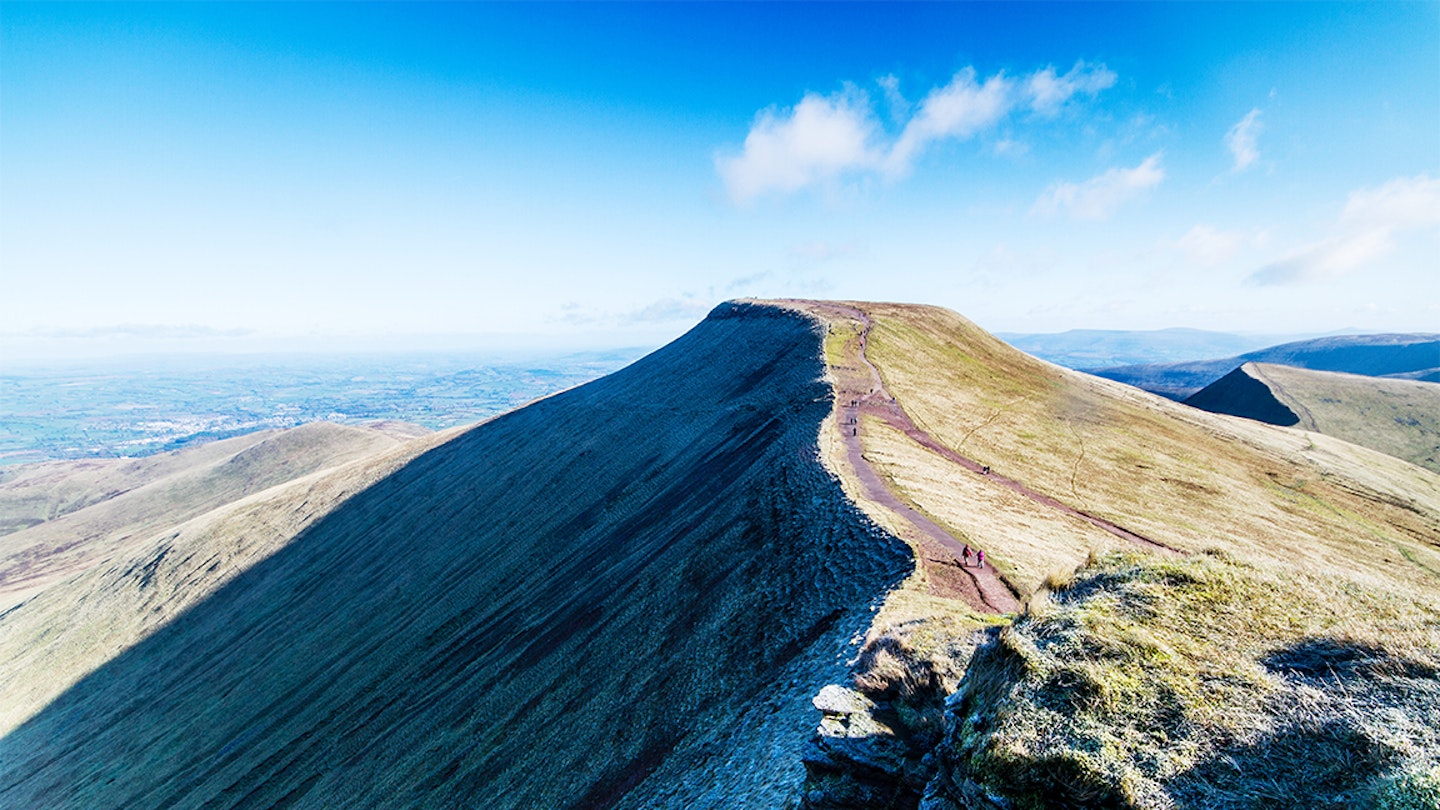
What happens to our footpaths in winter, and how can we respond to it? Here again, the news is better than it might first appear. Yes, the ground may be less predictable, potentially slippier. But those factors force us to engage our brains, exercise more of our muscle groups and improve our stamina.
“The trick is to think four or five steps ahead,” says ultra runner, Lee Procter. “Think like snooker player Ronnie O’Sullivan. He’s not thinking of his next shot, he’s thinking of the following five: the angles, the consequences. Shorten your stride, look ahead, and look for the firmest line through whatever’s coming up.”
If speed is your priority, it may be best to stay low. “The weather often dictates whether I’ll stay at home along the coast or head out onto the fells,” says Lakeland-based Ricky Lightfoot.
“If I’m planning a harder session and the weather is wet or it’s been snowing on the fells, I’ll stick to local roads and trails. Heading to a muddy trail or three feet of snow defeats the object for me.”
But for some, the high, wild stuff of winter can be a joy. “I love running through snow because it’s so exhilarating, especially downhill,” says Lee Procter. “Sometimes it’s more like surfing than running. Lean back for braking and let the surface snow move with you, like a scree run. It’s ace if you’ve reliable grip on your shoes.” Fellow ultra runner Marcus Scotney agrees: “Running in the snow can be an amazing experience. Seeing the hills covered in snow completely changes your whole perspective, especially if you are blessed with blue skies.”
That comes with some warnings, of course. You should avoid terrain that’s obviously iced up (or invest in spiked trail running shoes or snow chains) and definitely avoid cornices: piled-up snow at the edge of a hillside or crag which may look stable but actually has no ground underneath it at all.
Winter thrills
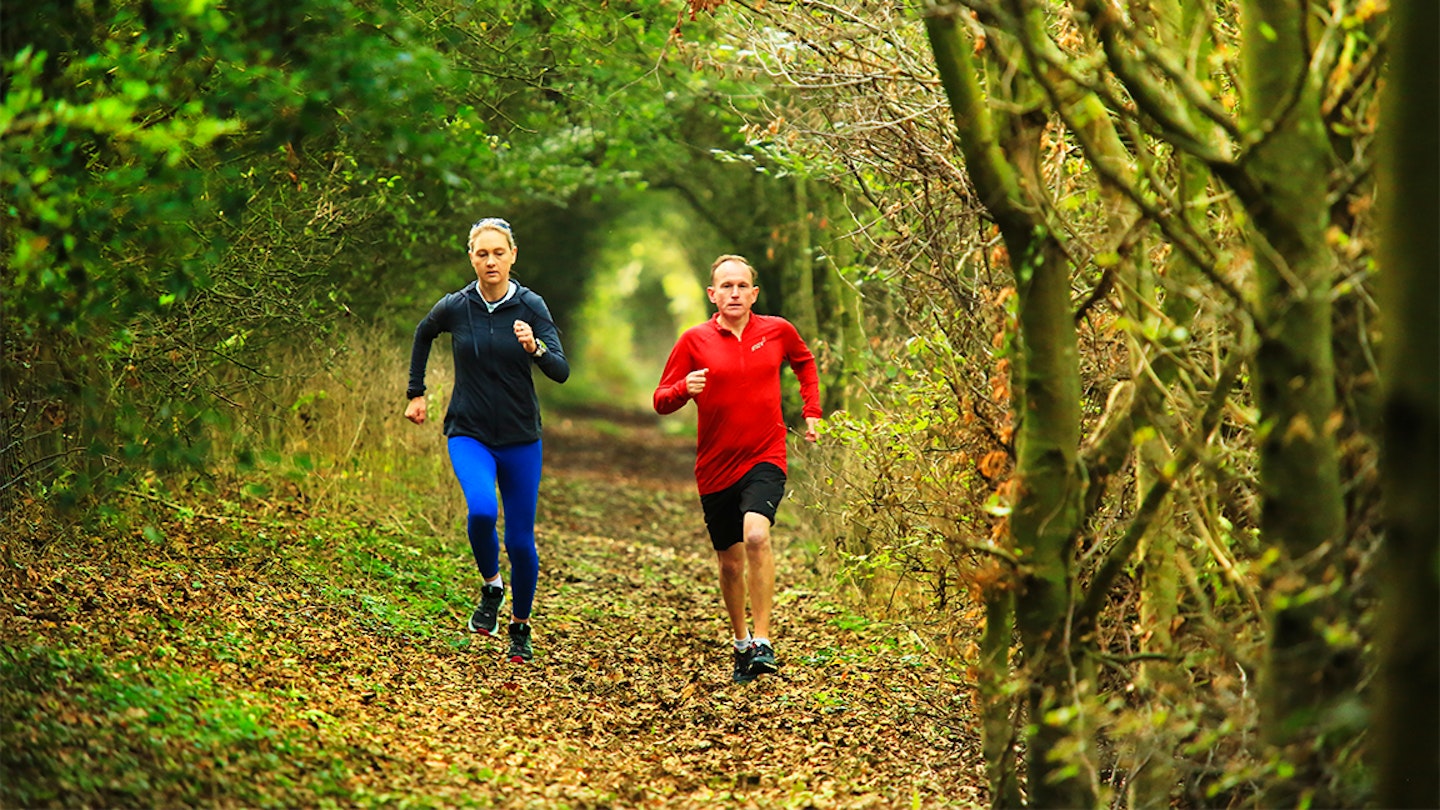
And so, back to our opening thought: when the air is cool and the breeze is up, and if you’re on relatively firm and even terrain, it is scientifically sound to say you’re likely to run faster, and possibly even happier, than you do in summer. And if you’re in tougher terrain, although you might be a little slower, the workout and the sense
of achievement can be even more beneficial than a quick time.
So we thought we’d end with a few testimonials from our experts on the joy of winter running. “I prefer it,” says Ricky Lightfoot. “I like pushing my limits, and being out in the fells in a storm or a snow blizzard is a great way to test myself.”
Marcus Scotney agrees: “It’s very special and spectacular to be able to
run over a snow-covered Bleaklow with frozen peat hags and tussocks. It feels even more remote and peaceful. You get a real sense of solitude, not seeing a soul for miles.”
And finally, Sarah Rowell: “If you have the right kit – ie, can keep warm and upright – there is no reason not to enjoy winter running. On a snowy day, nothing beats running past a line of stuck and struggling cars. “The fun, the challenge and that feeling of achievement when you get back: it’s just fantastic.”
Top cold weather running tips
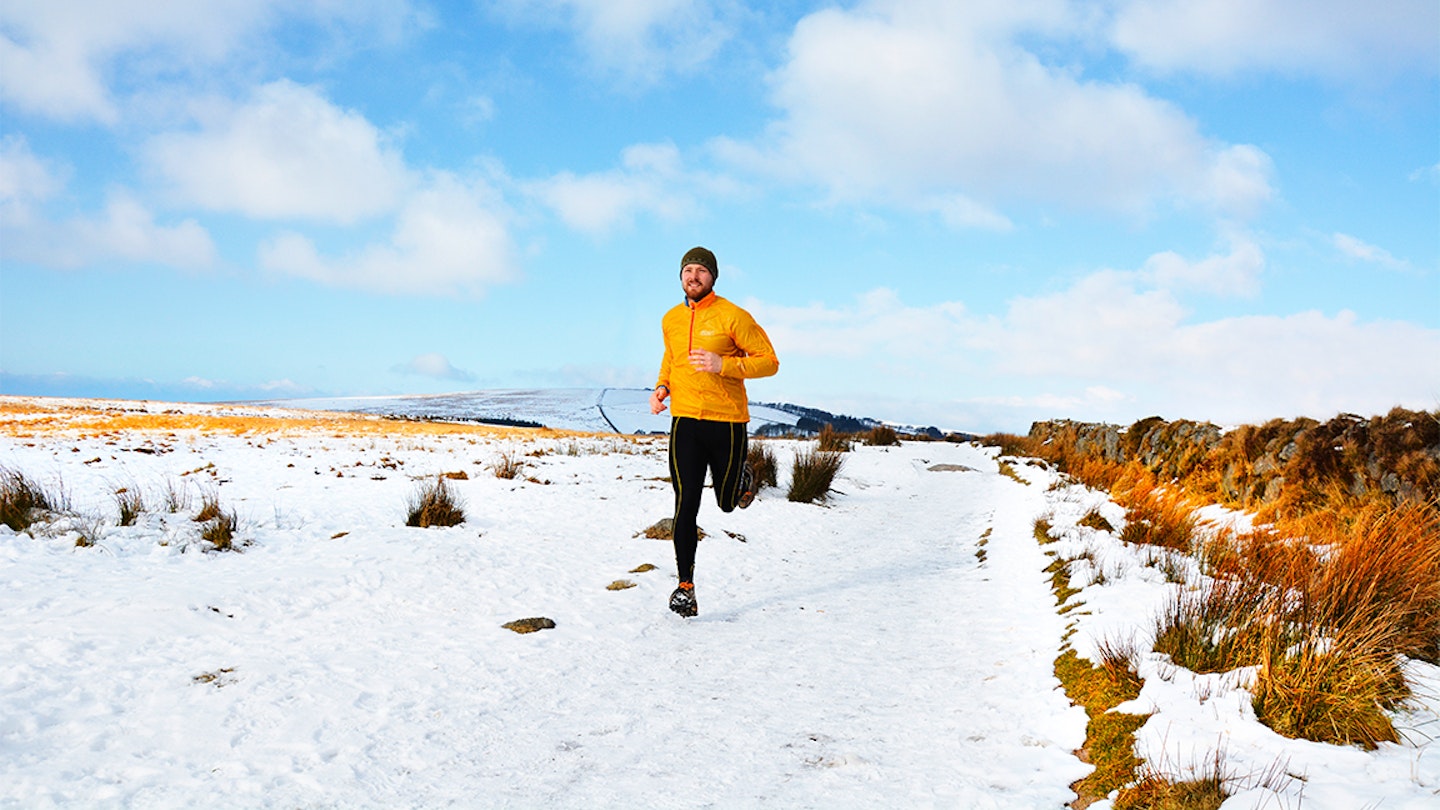
Sarah Rowell breaks down her top cold-weather tips for brain and body:
Manage your expectations: I used to do an off-road run that went from taking 2 hours 5 minutes on a dry summer’s day to over 2 hours 20 when it was wet and muddy. A field churned up by horses or cattle will usually involve full trainer submersion in mud. Likewise, trying to run fast over ice is just asking for injury. Slow down and/or change your route.
Read the weather: Be prepared for different underfoot conditions. If it’s icy, think about using (or carrying) micro spikes.
Waterproof your feet: I wasn’t a fan of waterproof shoes because of the extra weight, but I have to admit to being a recent convert to Gore-Tex shoes in winter. Wet grass becomes a delight!
Be self-sufficient: I always take an extra top (or two) with me. If I turn an ankle, especially on exposed ground, I can keep warm.
How to deal with the cold when running
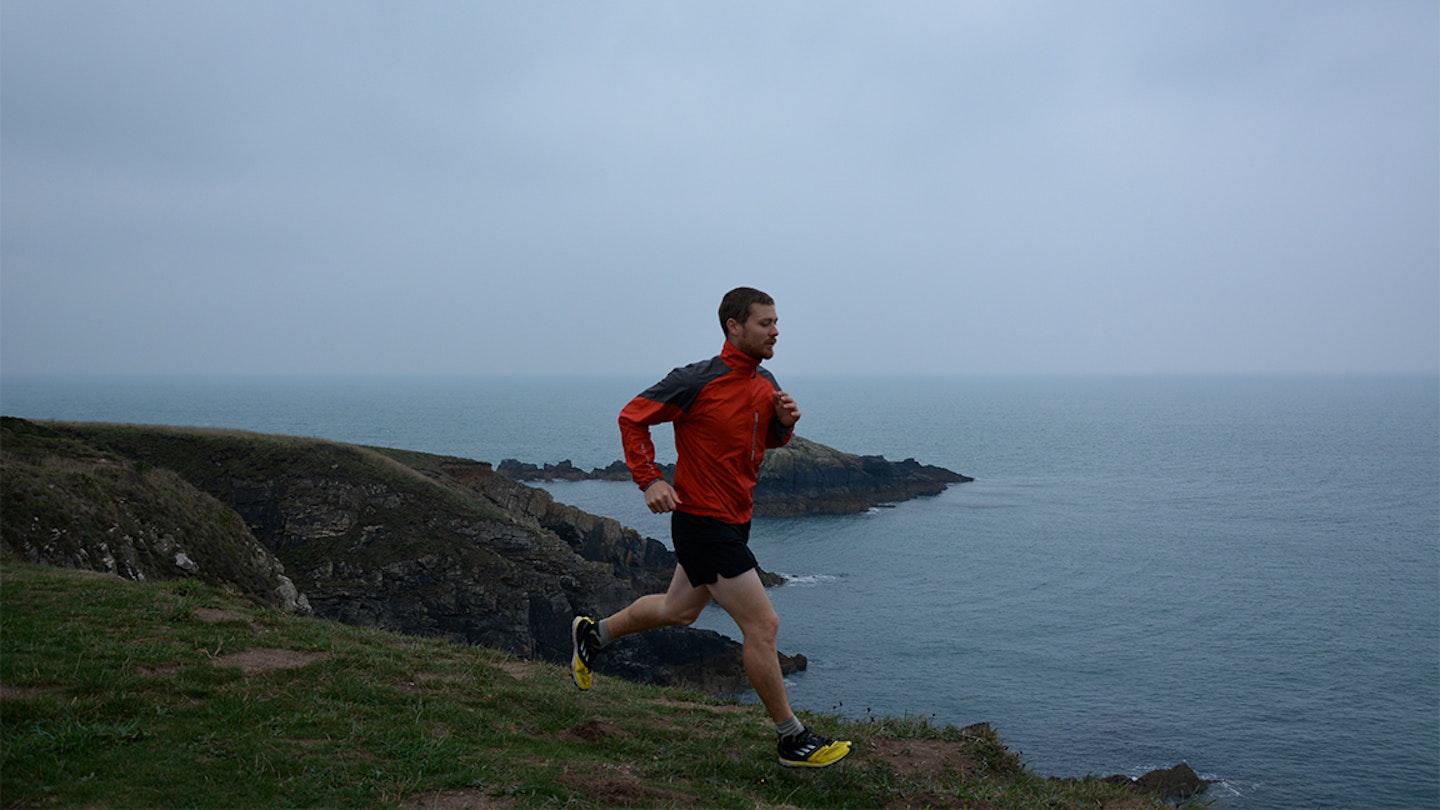
-
Warm-up indoors: If at all possible, raise your heart rate and warm up your muscles before you step out into the cold and start running. This is your best chance of not letting your blood vessels contract, thus keeping your blood flowing nicely.
-
Warm-up for longer: If you usually warm up for five minutes, consider making it 10 in winter, as you will soon start to cool down and lose the benefits of your warm-up if the session’s too short. Include some simple stretches, to prevent muscles and joints from stiffening in the cold.
-
Don’t layer up too much: While it’s a good idea to wear a light fleece or windproof jacket while you’re warming up, be brave and shed it when you start running (a philosophy sometimes known as ‘be bold, start cold’). Your body heat will soon increase as you run, and an extra layer will simply trap the excess heat that would very much like to escape.
-
Stay hydrated: Don’t lose your bottle: for everything from sweat management to supporting your dried-out trachea, water is still vital before and after a winter run (and during, if you can).
-
Warm-up afterwards: Minimise the distance from the end of your run to a warm place.
Your body temperature will drop quickly after you finish, so get indoors sharpish. If you can finish your run at your front door, perfect. If you have to drive back home, have a warm layer and hot drink waiting in the car. As ultra runner Marcus Scotney says, “Recovery after a wintry run is so important. Getting out of cold, wet kit quickly is imperative. I like to light our wood burning stove and sit by it with a peppermint tea or some soup.” -
Keep the blood pumping: Arianne Brown, ultra runner and author of the blog A Mother’s Write, advises us to eat heart-healthy foods like fish, nuts, berries, and green veg to make sure the heart is ready for the labours (and joys) of running in winter.
Top image credit: Jen and Sim Benson
